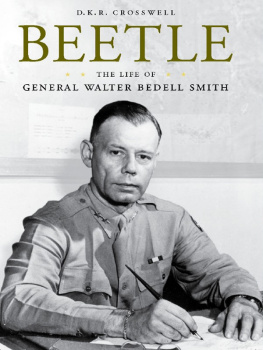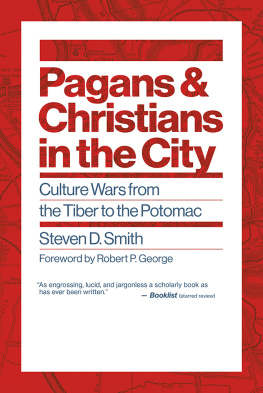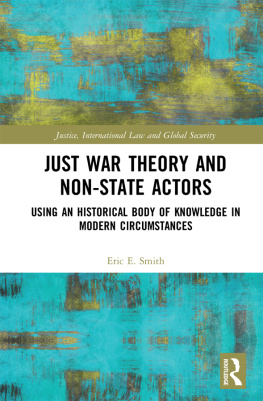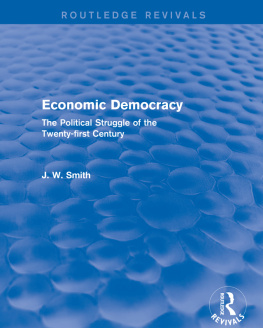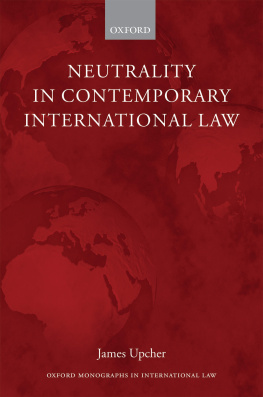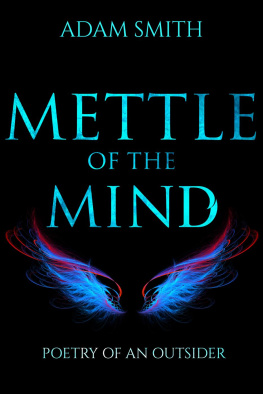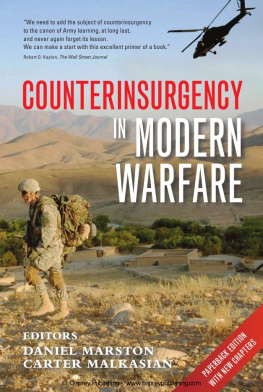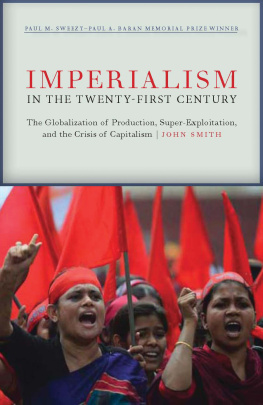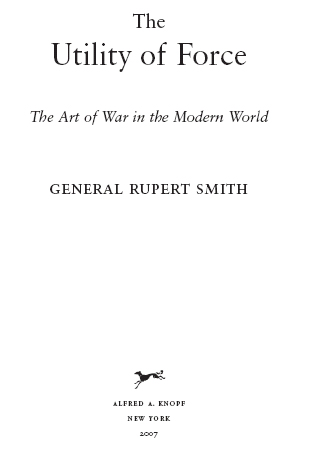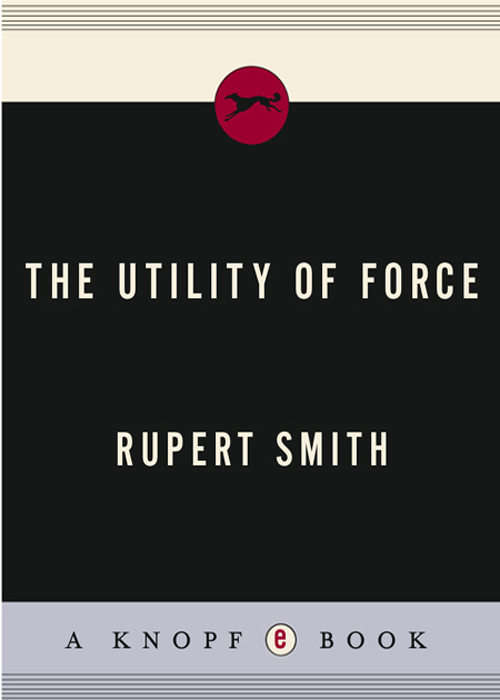
Contents
PART ONE
Interstate Industrial War
PART TWO
The Cold War Confrontation
PART THREE
War Amongst the People
To all those who followed me or took my direction
when I thought these thoughts
Preface
This book has been forty years, and then three, in the making: a life in military service, and a period of reflection.
From the time the 1991 Gulf War ended until I left the army in 2002 I was asked if I was going to write a book, and on each occasion I said no. Sometimes I asked my questioners what the book was to be about, and they would answer along the lines of, You have done so much, surely there is a story to tell. I took from these answers that they expected some account, chronological with anecdotes of personalities and events encountered along the way, and the more the telling uncovered a fresh angle on events, the better it would be. I have not kept a record in such a way as to be at all confident of telling such a story, even if I had thought about my service as source material for such a book.
Then, just before I retired, I was standing amidst a number of people, glass of wine in one hand, sandwich in the other, indulging in the hospitality of a learned institute prior to giving a seminar on, as I recall, The Prospects for a European Defence Identity, when I was asked the question again. My reflex response was the usual denial. One of those who heard the question and answer was a great historian, a man whose writings and wisdom I admired; he said, Dont say no, now. When you have retired write a report to self and then you will know if you have something you want to write for others to read. From that conversation on I have reflected on this advice, and while I have not, as such, written that report to self, I have thought at length about what might be included in it.
What do I report about? What have I to say about where or when I have served that is not already part of the record? After each event reports were written by me and others about all salient issues: those involved, the situation, the actions taken, the equipment or lack of it, and so on. Why repeat myself? Or did I, deliberately or not, leave something unsaid? These thoughts, or as one of my French comrades would say, thinks, have slowly distilled into one report entry:
On every occasion that I have been sent to achieve some military objective in order to serve a political purpose, I, and those with me, have had to change our method and reorganize in order to succeed. Until this was done we could not use our force effectively. On the basis of my lengthy experience, I have come to consider this as normala necessary part of every operation. And after forty years of service, and particularly the last twelve, I believe I have gained an understanding of how to think about this inevitable and crucial phenomenon of conflict and warfare. The need to adapt is driven by the decisions of the opponent, the choice of objectives, the way or method force is applied, and the forces and recourses available, particularly when operating with allies. All of this demands an understanding of the political context of the operation, and the role of the military within it. Only when adaptation and context are complete can force be applied with utility.
In stating the foregoing I am not raising the old cry of armies preparing for the last war. Indeed, armies do not prepare for the last war, they frequently prepare for the wrong oneif for no other reason than that governments will usually fund only against the anticipated primary threat as opposed to risk, and the adversary will usually play to his opponents weakness rather than strength. For example: when we deployed to the Gulf in 1990 we went in circumstances that lay outside the parameters of British defence policy since the late 1960s. As a result only the very oldest equipment had been designed to operate in a desert. The more recent acquisitions had been designed to work only in north-west Europeand therefore none had sand filters, a vital necessity in desert warfareand within a concept of battle associated with that great confrontation, the Cold War. In this grand scenario the armies of the West, mobilized and under NATO command, would conduct a forward defence, while the air forces, in the main those of the United States, attacked the Warsaw Pact columns and the Soviet heartland, first with conventional high explosive and then with nuclear weapons. This was to be total war, and it was for this we were organized, particularly in the fields of supply, maintenance and medical support. But our aims in the Gulf in 1991 were limited; the war was not total. In addition, the British forces were deployed as minority partners in a coalition dominated by the United States and without the mechanisms of political control that have been evolved over the years by NATO. On the plus side, Iraqs generalsor was it only Saddam Hussein?chose to fight in such a way and on such terrain that they played to many of the strengths of the U.S. and NATO way of war, particularly in the use of air power. And so, in these circumstances it was necessary to adapt our method and organization, concentrating on those to do with land warfare and its support, while continuing to play to our strengths in the air.
Change or adaptation is also required when the objective that is to be achieved by military force is different from that prepared for. In the case of the Gulf War this was not necessary since the objective for the actual use of military force, as opposed to its threat, was very similar to that we had prepared for in Europe: the destruction of the Soviet Operational Manoeuvre Groups being much the same as the destruction of Saddams Republican Guard. Thus much of the preparation for the tactical battle in north-west Europe was still applicable. However, when military force is expected to be deployed to achieve an objective different from that prepared for, such as the coercion of President Milosevic of Serbia to hand over the province of Kosovo to an international administration, then this will also affect the nature of the battle and require an adapted or new method of operating, as well as changes to the process of command and organization.
Perhaps the most extreme example of this change of objective is to be found in the employment of the British army in Northern Ireland, where it is operating in aid of the constabulary. Indeed, in British army jargon this type of operation goes under the heading of Military Aid to the Civil Power. The long history of such operations, founded in the days of empire and practiced frequently in the retreat from empire, has meant that for the British army many changes in tactical method and organization have become institutionalized and applied as similar situations are identified. In other words, the British army has been in a constant state of change and adaptation for good operational reasons. However, it has retained much the same organization throughout this period, adapting its formations and units to each and every operation. Doctrine has been used more to justify the basic organization than to explain why the adaptations have worked.
All armies are facing the need for transformation, particularly those of NATO and the former Warsaw Pact, but currently this is a debate concerning technology, numbers and organizationnot how these forces are to be fought, and to what purpose.
I have spent many years thinking about, practising and implementing the use of force, and what I have to report is an approach to considering the use of military force and then applying it to achieve ones purpose. I am penning this report at a time of global security concerns, when military force is being considered or actually used in a wide range of scenarios, often with allies. Even a few examples reflect the complexity of these scenarios: terrorism, proliferation of weapons of mass destruction, peacemaking, peacekeeping, control of the mass movement of people, environmental protection, or the protection of availability of some scarce resource, be it energy, water or food. There are many more, possibly less obvious, examples, but the point remains the same: military force is considered a solution, or part of a solution, in a wide range of problems for which it was not originally intended or configured.
Next page

